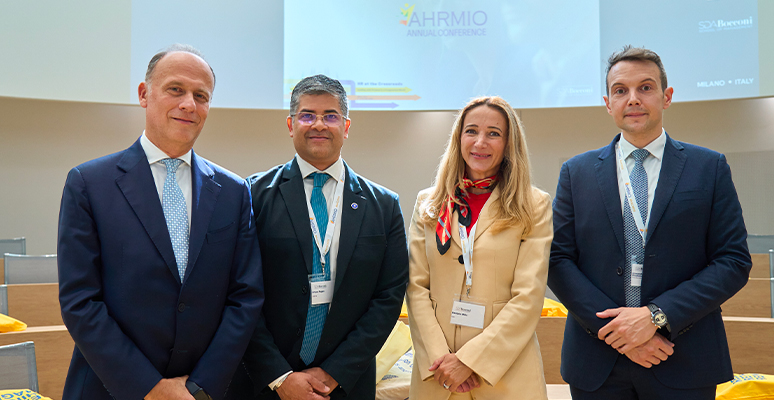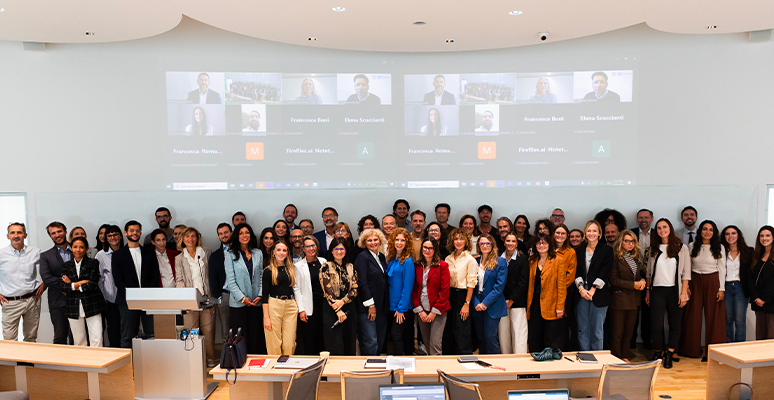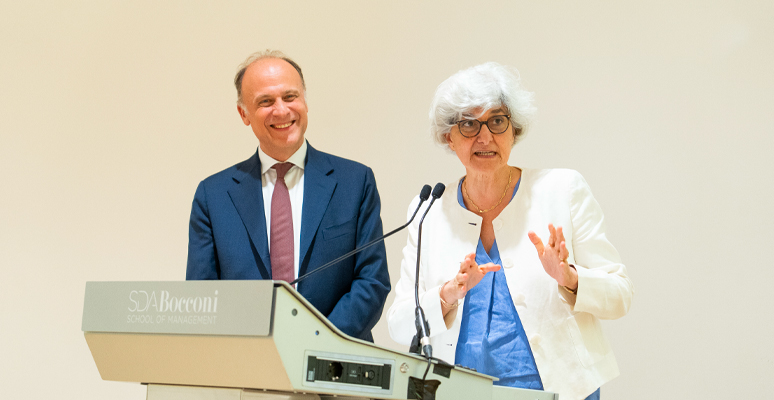
- Start Date
- Duration
- Format
- Language
- 7 Nov 2025
- 1 day
- Class
- English
The environmental and social challenges facing the world today are daunting ones (climate change, resource scarcity, the dramatic degradation of the ecosystem, and human rights, to name a few). Such issues, which call for a rapid transformation of our economy, have become strategic questions for entrepreneurial organizations the world over. These global challenges are reshaping the political, social and competitive arena and impacting business activities, but at the same time generating new market opportunities. Managers and corporate leaders need to rethink the way they do business to fundamentally realign with planetary boundaries and shrink their corporate footprint. This means embedding sustainability in the process of formulating strategy and implementing innovative business models and operating practices along the entire value chain.
Published in July 2022 by Egea, the book Sostenibilità e PMI. Aspetti strategici, operativi e finanziari, edited by Francesco Perrini, addresses sustainability from every angle, and serves as a comprehensive guide, tailor made for SMEs.
We reached out to the editor to ask about some of the central themes of the book.
What are the chief tools to deploy to foster a sustainable transition for SMEs?
The first presents a cultural matrix. Sustainability has to be perceived by SMEs as a strong point, a real asset that paves the way to a strong market position, and levels up their competitiveness. The second tool can be incapsulated in the concept of “integrated corporate compliance.” This also includes alignment with ESG requirements, which enables organizations to be more resilient and remain on the market. The third tool is a financial one: here we’re referring specifically to the process of integrating ESG criteria in valuating credit worthiness. Integrating ESG criteria in the valuation process to determine credit worthiness is the new frontier in sustainable finance.
All this means that sustainability is becoming an increasingly central aspect to factor into risk analysis and to consider for creating value and competitive advantage for a company. But in order for this integration to happen, all the data pertinent to ESG must be formalized, quantified and standardized, because they are extremely heterogeneous.
One chapter of the book is about green taxation. Can you explain what that is exactly?
Taxation is an effective political tool that will help us attain climate neutrality by 2050, and achieve the other environmental objectives set down within the framework of the European Green Deal. In fact, environmental taxes send producers, users and consumers the right signal on prices and the right incentives to promote more environmentally-friendly consumption and to foster sustainable growth. “Taxing Energy Use,” a report published by the OSCE in 2019, establishes guidelines for fiscal policy on energy, with an eye to progressively curbing CO2 emissions and climate change, opening up access to clean energy, in part by leveraging taxes. By leveraging different tax rates, nations can mitigate the negative effects of climate change, in line with the Paris Agreement, in order to minimize global warming and provide fiscal incentives for the use of cleaner and more sustainable energy sources like hydroelectric, wind and solar.
With regard to energy products, a communication from the European Commission on 11 December 2019 advanced (among other actions) an imminent revision of Directive 2003/96/CE of the Council dated 27 October 2003. This would restructure the Community framework for taxing energy and electricity, clearly showing that fiscal interventions constitute a fundamental aspect of the Green Deal.
For SMEs, how can blockchain technologies support value creation and sustainability?
Blockchain technology is of the main areas of innovation, representing the heart of the so-called “digital transformation.” What’s more, all EU member states point to research and innovation as the fundamental drivers to make their respective production systems more competitive. Access to financial resources from the EU is a big plus for SMEs to cover investments in this specific sector, and in turn, in value creation and the innovation of internal processes to make them eco-sustainable, circular, and regenerative.
As far as supply chain management, decentralization, transparency and the block architecture of blockchain technology guarantees the total traceability of commercial relationships. This thanks to the fact that key information for smart contracts is provided to third parties who belong to the network, and to “digital oracles” that verify and authenticate the reliability of information coming from external sources.
Access to a single ledger linked to a specific smart contract makes it possible to monitor measurable and digitizable variables related to every aspect of the commercial transaction (product origin, price, consumer protection, terms of transportation, verification of compliance with the terms of contract and legislation, logistics, and so on). And all in real time. This enhances efficiency in negotiations and transactions generated with smart contracts, minimizing corruption and tax evasion.
SDA Bocconi School of Management


Comprendere a fondo e implementare con efficacia la nuova dimensione della sostenibilità aziendale e saper realizzare un piano strategico guidato da criteri ESG.

Il corso intende fornire tutte le competenze necessarie a padroneggiare e applicare i principali strumenti e framework esistenti in materia di sustainability reporting.


